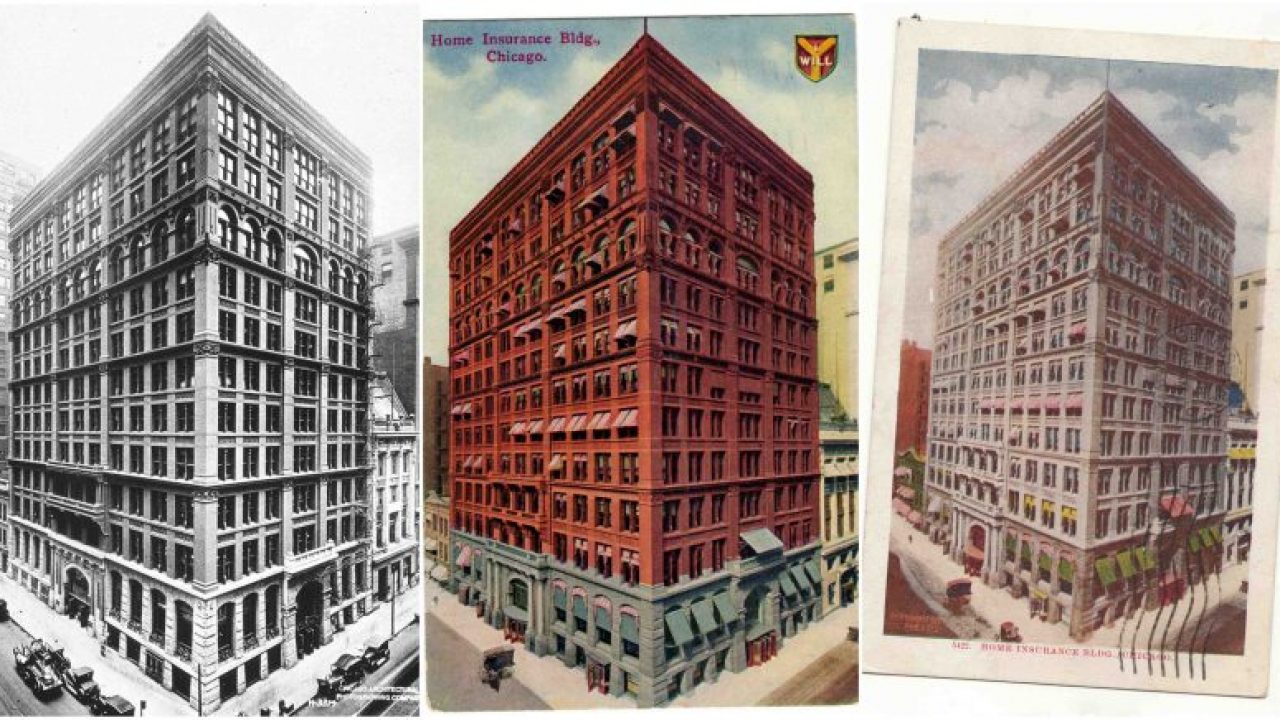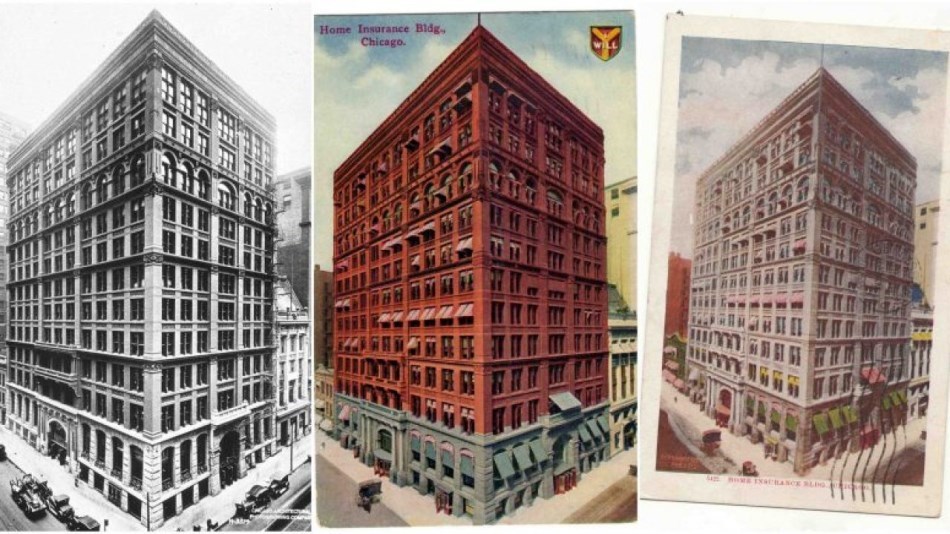The building opened in 1885 and was demolished 46 years later in 1931.
The building was designed in 1884 by Jenney for the Home Insurance Company of New York.

The building was completed in 1885 in Chicago, and was the first tall building to use structural steel in its frame, but the majority of its structure was composed of cast and wrought iron. While the Ditherington Flax Mill was an earlier fireproof-metal-framed building and is sometimes considered to be the first skyscraper, it was only five stories tall.
Because of the building's unique architecture and weight-bearing frame, it is considered one of the world's first skyscrapers. It had 10 stories and rose to a height of 138 ft (42.1 m) In 1891, two floors were added.
.jpg)
.jpeg)
The building weighed one-third as much as a masonry building and city officials were so concerned they halted construction while they investigated its safety. The Home Insurance Building is an example of the Chicago School of Architecture. The building set precedents in skyscraper construction. Minneapolis architect Leroy Buffington patented the concept of the skeletal-frame tall building in 1888 and proposed "a 28-story 'stratosphere-scraper'—a notion mocked by the architectural press of the time as impractical and ludicrous." His proposal nonetheless attracted the attention of the national architectural and building communities to the possibilities of iron skeletal framing, "which in primitive form had been around for decades."
.jpg)
The Home Insurance Building is often considered the first skyscraper, although this status is disputed. Its main claim to that status is as the first tall building supported by an iron frame as a skeleton. It was the first multistory building in the United States to largely use iron in its exterior to support the masonry since Badger had constructed similar grain elevators between 1860 and 1862. The status of the Home Insurance Building as the first skyscraper had been accorded by the time of its centennial in 1985.
According to wikipedia








